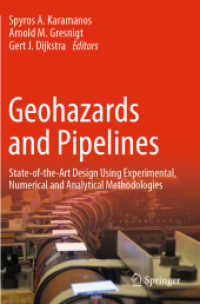基本説明
This lavishly illsutrated volume, featuring images from an award-winning photographers, allows readers to discover a civilization and understand its role in the world today.
Description
(Extract)
"The publication of this book could not have been better timed. The challenges facing the Turkic-speaking world at the beginning of the twenty-first century are great. These challenges have caused-and will continue to cause-such big changes that a documentation of the Turkic peoples in their present state is highly necessary. And it is impossible to predict what lies ahead.
In parts of the Turkic-speaking world, nomadism - the original lifestyle for millions of Turkic people-has been practiced even up to the present day, although most groups became sedentary at least several generations ago. In the former Soviet Union, the collapse of the Communist regime has brought a greater amount of individual freedom to the Turkic peoples living there, but capitalism and new opportunities for private enterprise have increased the contrast between rich and poor, imposing negative effects on parts of society. The globalized environment in the post-Communist era is likely to condemn nomadism, once and for all, to being a curiosity practiced only by very marginal groups. Therefore, documentation of these groups is of the utmost importance.
At the same time, Turkey-the Turkic-speaking country where Europeanization has been an essential part of state politics and policy for about two hundred years (with varying intensity, reaching its peak under Mustafa Kemal Ataturk)- may well take its final step towards becoming a member of the European Union within the not-too-distant future. This will imply a considerable transformation of Turkish society, and many traditional customs and attitudes-not to mention foodstuffs-will have to be sacrificed or undergo profound changes. Accordingly, documentation of the traditional lifestyle-especially in rural Turkey-is very important while it is still possible.
These dramatic changes occurring in the new millennium, however, are by no means the first the Turkic world has experienced. Thanks to the Turkic peoples' nomadic origins, they have lived in symbiotic relationships with other-often sedentary-peoples they met as they spread out from their 'Urheimat' (homeland), and their languages have undergone alterations as a result.
One of the most original aspects of this book is the treatment of the different Turkic peoples through their history of interactions with other peoples. In the field of linguistics, the study of language contacts has taken an important step forward, thanks to the recent works of the Turcologist Lars Johanson (a contributor to this volume). He has studied and emphasized the great linguistic importance of contact among the Turkic languages internally and between the Turkic languages and other languages.
A similar approach in fields other than linguistics also represents a new trend in the study of cultural history. This approach is directly opposed to the traditional view that language is self-contained-that the source of changes in a language should be sought within that language itself. The notion that the "pure self" is impossible to find-that both Man and his cultures are dynamic entities always borrowing from and influencing one another-is also relatively new within Turkish culture, where it has traditionally been believed (at least in some circles) that "pure Turkishness" was something to be sought out, something to strive for, and something to emulate. In fact, however, not only the Turkic languages, but also the different cultures-including the art and material culture of the Turks- are products of such symbioses, especially with the Mongols and other East Asian tribes and the Iranian peoples.
In these symbioses, Turkic languages and culture of course have been not only the recipients; they also have contributed immensely to the languages and cultures with which they have been in contact. ..."


![見て覚える!精神保健福祉士国試ナビ[専門科目] 〈2025〉](../images/goods/ar2/web/imgdata2/48243/4824300452.jpg)





